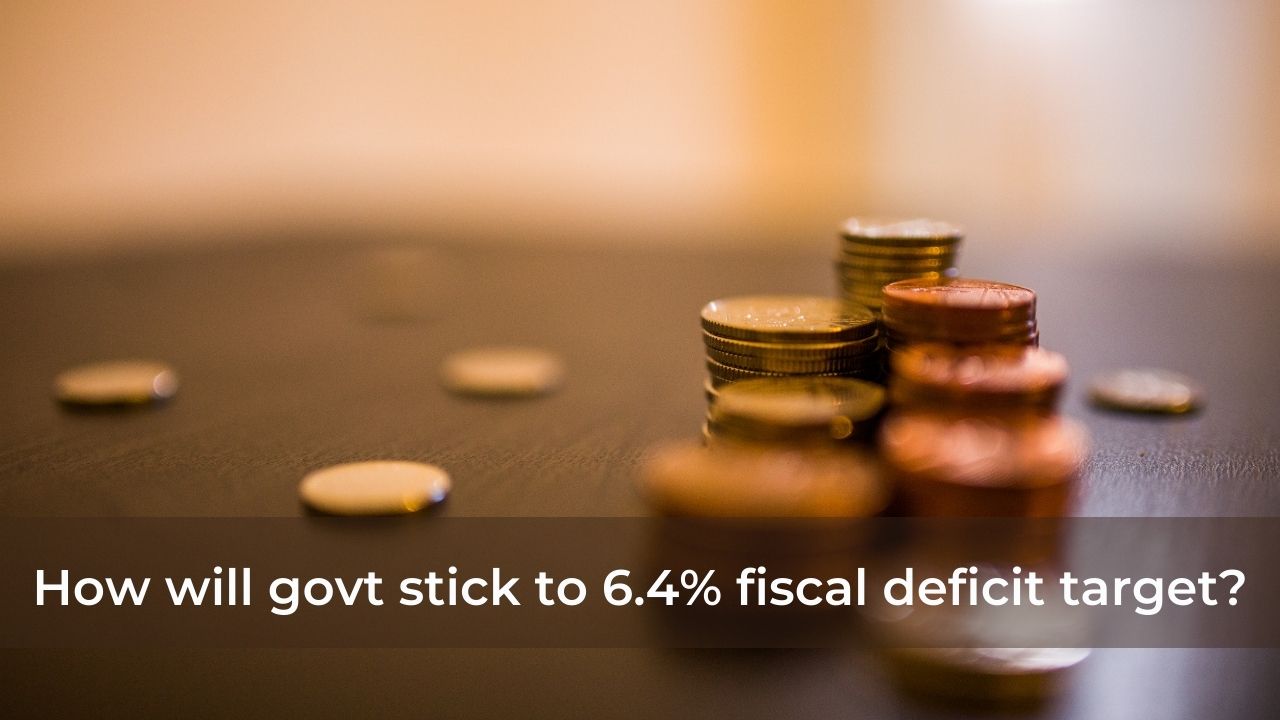How will the government stick to 6.4% fiscal deficit target?

Last Updated: 14th December 2022 - 07:07 pm
When the Budget 2022 was announced, one redeeming feature was that the government decided to cut down the fiscal deficit from 6.9% in FY22 to 6.4% for FY23. The fall of 50 bps was not substantial but a good decision in giving comfort to markets. However, the battler against inflation was proving expensive as the government had to resort to duty cuts to boost demand and cut down inflation. That had threatened to take the fiscal deficit for FY23 back to near the 7% levels. However, now the government has promised to stick to 6.4%.
Is that really feasible? After all, the government has already indicated that it would exceed its borrowing target by Rs2 trillion. That would not have been required had it not been for the shortfalls created by a higher fiscal deficit. However, the government has continued to express confidence that the fiscal deficit for FY23 would still be pegged at a level of 6.4%, irrespective of the pressures created by a spike in inflation and the lower revenues on account of a cut in excise duties on a number of inputs.
One way the government is going to control the deficit is through a cut in the import price of commodities. For example, Russia has gone from being the 15th largest supplier of crude oil to India to being the second largest after Iraq. Now, Russia supplies more oil to India than Saudi Arabia. While the 85% dependence on imported crude is still there, Russia gives India oil at a discount of 20-25%, which will substantially save on import costs and help the government to maintain its overall fiscal deficit at under 6.4% levels for FY23.
One other reason for the government’s confidence of maintaining 6.4% fiscal deficit is the recent windfall tax imposed by the government on domestic crude oil production and fuel exports. This move alone is expected to generate close to Rs130,000 crore and substantially offset the higher cost it will incur from cutting the excise duties on petrol and diesel. In addition, the government has also increased the import duties on gold by 5%, with the total gold imports now exceeding $6 billion on a monthly basis on an average.
Earlier in May 2022, amidst a sharp spike in global crude prices, the government announced a cut in the excise duty of Rs8 per litre on petrol and Rs6 a litre on diesel. This was to reduce the revenues of the government by more than Rs1 trillion. These higher costs will be partially compensated by the additional duties on oil production and the export of petrol and diesel. That is likely to boost the revenues for the government and at the same time, it will also discourage the export of products; away from the domestic market.
How much will the special duties and taxes generate for the government? The windfall tax on crude production will generate Rs65,600 crore while the tax on export products will generate Rs52,700 crore per year. Just for the remaining months of FY23, a total sum of Rs100,000 crore will eb released. However, this may not be great news for companies like RIL that will see its GRMs drop by almost $12/bbl. If the government is lucky, it may just about end up not deviating from its original fiscal deficit target of a healthy 6.4%.
Disclaimer: Investment/Trading in securities Market is subject to market risk, past performance is not a guarantee of future performance. The risk of loss in trading and investment in Securities markets including Equites and Derivatives can be substantial.
Trending on 5paisa
Discover more of what matters to you.
 Tanushree Jaiswal
Tanushree Jaiswal